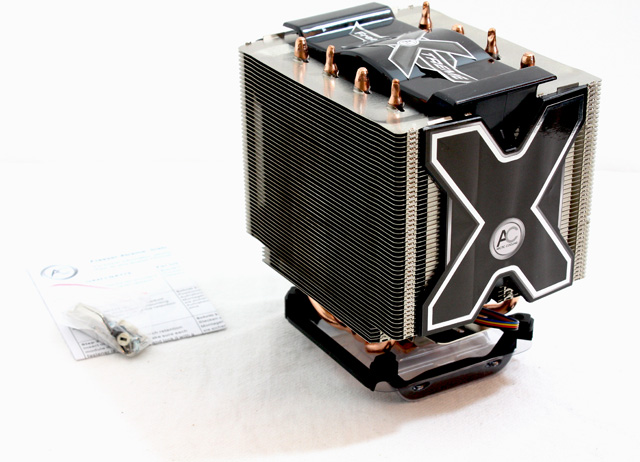2 - Heatpipe cooling 101
Right .. let's begin with a little Heatpipe cooling 101.
A new trend that started over the past two years is heatpipe based cooling. Several advantages come directly to mind, as the principle behind heatpipe cooling is quite simple. You move heat towards another spot other than the source. This way you can quickly move the heat away from the source, effectively cooling it down optimally at location B. This means less resources and effort is needed at the original source of the heat. The less resources I'm talking about is a direct active form of heat dissipation e.g. loud fans. More cooling these days equals more noise, and don't we all hate it ?
So, here we are establishing the logic behind heatpipe based cooling. Basically if you don't go too crazy on the CPU, with the help of a good heatpipe design you could actually passively cool a processor, which in the end ensures you a silent PC. And that's what it's really about. Optimal cooling versus the noise your PC makes. PC's have become a small oven, you can literally fry an egg on your CPU when it's idling (with no cooling). When you are playing a game, utilizing 200 to maybe 400 watts throughout your PC, that my friends generates heat.
High cooling performance and silence didn't belong in the same sentence. If people want performance, they usually need to buy a cooler that would create a veritable Tornado in their case, most likely sounding like a jet airplane getting ready to take off. However, this is now becoming a thing of the past, since companies are finally trying to make coolers that offer both high performance and are silent down to the level of actually letting a user sleep in the same room with that mini tornado rig of his or hers.
This is where heatpipe based cooling kicks in really well.
Believe it or not but the technology of heatpipe cooling is somewhat based on what we see in a 'refrigerator'. Refrigeration and phase changer coolers. When you look closely at the the cooler you'll see copper pipes and cooling ribbons. An internal coolant is inside these pipes and flows from the chamber upwards towards the cooling ribbons where heat will be dissipated with the help of airflow. The cooling method is all based around circulation. Although we just named it gas it's initial cold state is typically a fluid like state. That coolant is unusual in that it has a very low boiling point well below 0°C at atmospheric pressure and a freezing point more than 100°C below zero. It is liquid when cold but easily becomes a vapor when heated and vice versa. By absorbing heat from the processor, the fluid will dissolve and form into gas which travels towards the top of the pipes where heat will follow the path of least resistance, to the aluminum fins.
Now there are lot's of heatpipe coolers, the cheaper ones don't have coolant at all and just use gas or even air to transport that heat but the idea of heatpipe based cooling covered in one line is: to move heat from point A to point B as efficiently as possible. So the cooling block mounted on your CPU absorbs whatever heat energy is available to it, and that heat is then transported trough the heatpipes to the outer rims of the fins where it'll dissipate.
Our test environment:
We decided to do things a little different this time. All these coolers will work fine under normal circumstances (we figured), so let's fire off a difficult environment at it.
All coolers today will be tested 'outside' a chassis. Meaning no airflow. Secondly we fire off high-end gear at it, let me show you what we used:
 nForce 790i Ultra SLI
nForce 790i Ultra SLI- Core 2 Quad QX9770Extreme at 3200 MHz and overclocked to 3600 MHz
- DDR3 1333 MHz
Now the culprit here is not so much our 3600 MHz overclock, but the fact that the QX9770 due to it's high FSB (1600 MHz) runs quite hot. Next to that, overclocked we are cramming 1.462 Volts into the processor to make sure it'll get warmer.
This will, under any and all circumstance, make the temperature more hefty on the cooler.
Once we established the clock frequency, we started mounting the coolers and each cooler will be tested under two conditions. The PC in IDLE as a load test, and at 100% CPU load on all four CPU cores with the help of the Prime95 load tester. Then we redo this test with the processor in an overclocked state.
That fact, in combination with the hefty overclock, is a really extreme stressor.
We do have a fail-safe .. the PC will automatically shut down once the CPU reaches 80 degrees C, so after 80 degrees C we can and will not measure, otherwise we risk toasting out processor.
And for your reference we tested at a constant 20-21 degrees C room temperature. Now for all coolers we created the same circumstances, same voltages, same environment, same ambient temperature. We also used and applied thermal paste on each run.

But first let's have a look at the cooler, which .. is pretty big isn't it ?
